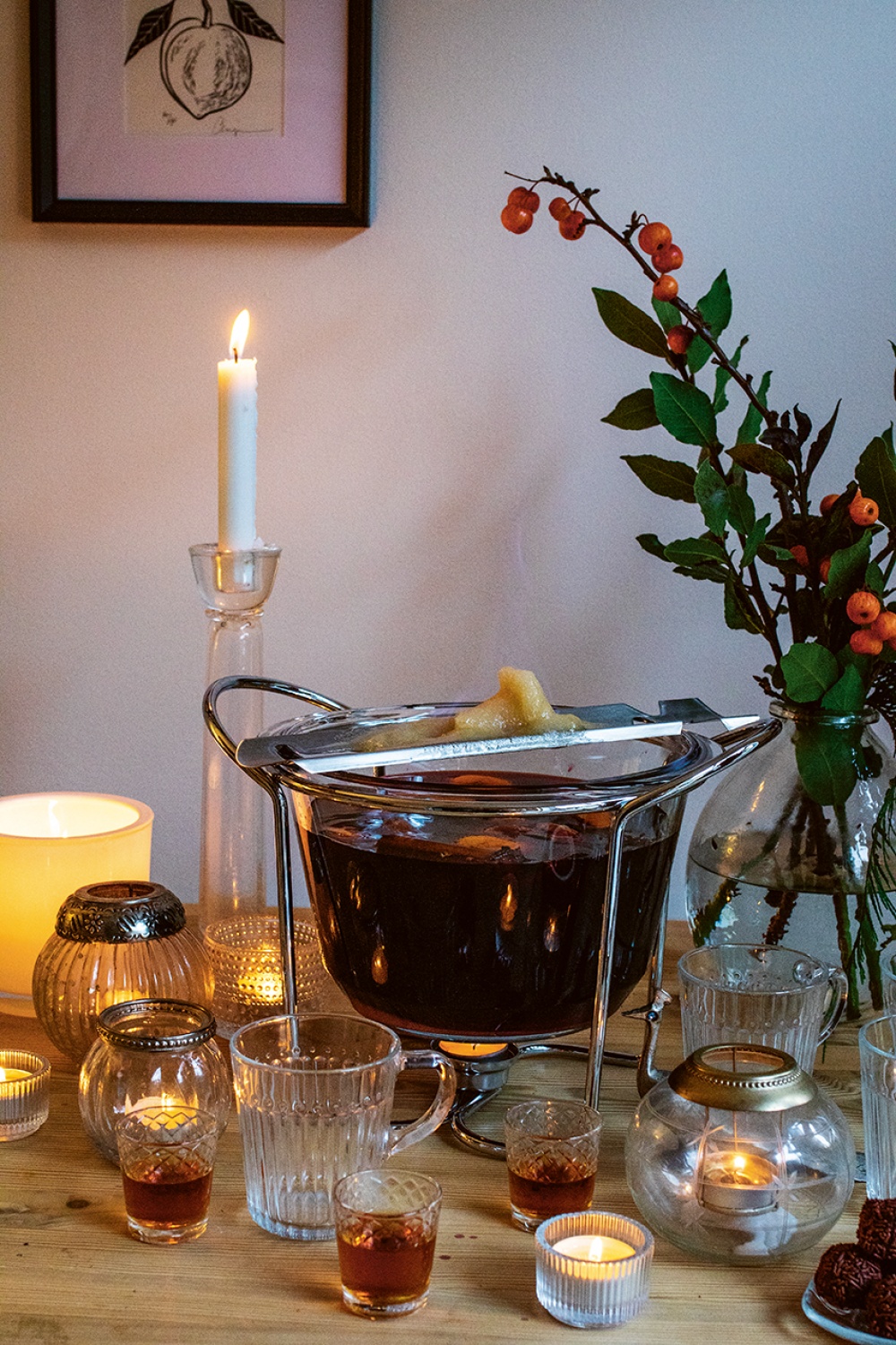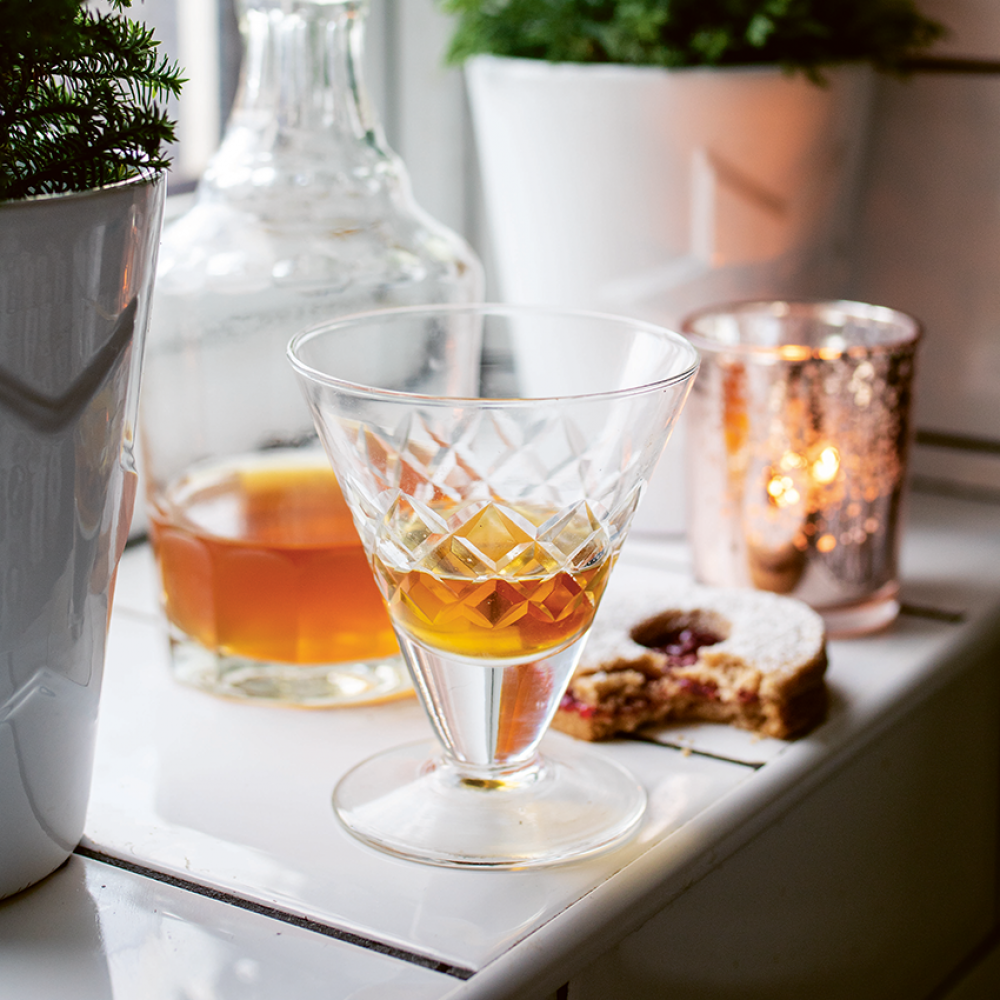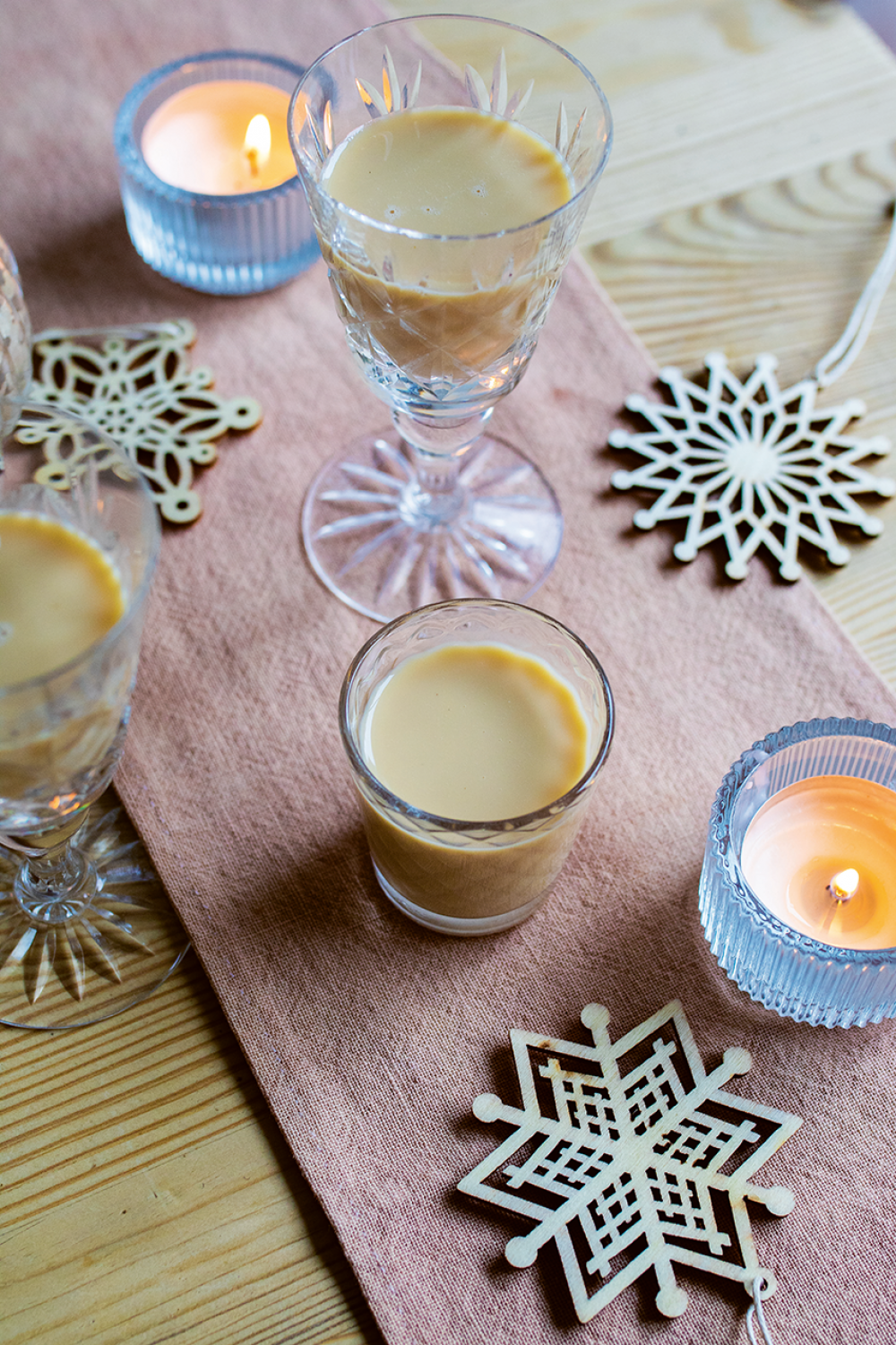Three Traditional Advent Cocktail Recipes To Help Celebrate The Christmas Countdown

Advent is a magical time, with all the anticipation of Christmas to come, and nowhere is it celebrated more than in Germany

Christmas Schnapps
Weihnachtsschnapps
The perfect pick-me-up, I keep a bottle of it in the fridge door and enjoy it like a sort of ‘espresso’ or mixed with milk or fresh orange juice.
Makes about 1 litre (4 1/2 cups)
for the Christmas schnapps
500ml vodka
125g demerara sugar
1 cinnamon stick
Pared zest of 1 orange (use a swivel peeler)
1 vanilla pod, split lengthwise
20g coffee beans, cracked in a mortar with a pestle
With orange
50ml Christmas Schnapps
Juice of 1 orange
1 tbsp lemon juice
With milk
25ml Christmas Schnapps
50ml whole milk
To make the Christmas Schnapps, put all the ingredients into a large glass jar, seal and shake the bottle over the course of a week from day to day to dissolve the sugar. Strain through a muslin (cheesecloth) or coffee filter, and bottle. Prepare as below. This is also good poured over ice cream, added to coffee or used in cakes and desserts.
Christmas schnapps with orange
Fill an old fashioned glass with ice, pour over the Christmas Schnapps followed by the orange then lemon juice, stir and enjoy.
Christmas schnapps with milk
Mix the Christmas Schnapps with the milk and pour into a short glass filled with ice.

Vanilla brandy cream
Eierlikör
An alcoholic egg-yolk cream might not sound too enticing, which is why I haven’t called it that – eggs in a drink can be a little off-putting, but you’d never know they were there in this silky vanilla-scented liqueur, which is rather like the continental cousin of an Irish cream – and who doesn’t admit to loving a Baileys at Christmas time? Eierlikör is a typical Advent drink, also popular over the Easter period. It’s served in little shot glasses made out of chocolate as a sweet treat after a meal or poured over ice cream and into coffee or hot milk with a grating of nutmeg (a quick version of an eggnog). It also works well in place of Advocaat in a snowball cocktail (I’ll hold my hands up and admit to loving these too). Traditionally this is made with the seeds of a vanilla pod – split the vanilla pod lengthwise and scrape out the seeds – but often I just use vanilla extract instead, mainly because it’s much cheaper and these days it’s easy to get hold of a good-quality bottle.
Makes just shy of 600ml (2 1/2 cups)
4 egg yolks
140g icing sugar
Pinch of fine sea salt
150ml brandy
1 1/2 tsp vanilla extract
200ml single cream
Put the egg yolks, icing sugar and salt into the bowl of a free-standing electric mixer fitted with a whisk attachment (or use a mixing bowl and hand-held electric whisk), and whisk for around three minutes until light and fluffy. Add the brandy, vanilla extract and cream and whisk for a further three minutes until silky and thick. Funnel the cream into a sterilized bottle and store in the fridge, where it will keep for two weeks.

‘Fire tongs’ punch
Feuerzangenbowle
A Feuerzangenbowle is as much about the ceremony and process as it is about the actual drink itself – it’s a party piece and one that demands everyone’s attention. A Zuckerhut (sugar cone) soaked in rum is placed onto tongs above a bowl of warm spiced wine, and is then set on fire so that it caramelizes and drips into the wine below. Many households own a special bowl for this, which has a stand with a tealight holder underneath and a sugar tong attachment for the top, but you can do this without any special equipment– all you need is a large saucepan, a tealight warmer and hand-held metal grater to balance on top of the saucepan. The Feuerzangenbowle’s season is very short, as traditionally it is only drunk at Christmas and on New Year’s Eve, after which our bowl goes back up into the attic along with all the decorations. It’s important that the rum has an alcohol content of at least 54 percent otherwise it won’t catch fire. Also – health and safety warning – if you are topping up the rum while the sugar is alight, never do this straight from the bottle; always top up using rum from a ladle.
Makes about 2 litres (81/2 cups)
2 oranges
1 lemon
3 bottles of fruity red wine
2 cinnamon sticks (each about 7cm)
15 cloves
2 star anise
1 x 250g Zuckerhut or 250g sugar cubes
75ml rum
Using a swivel peeler, peel strips of zest off the oranges and lemon and place in a large saucepan. Now squeeze the oranges and lemon and pour the juice into the saucepan.
Add the wine, cinnamon sticks, cloves and star anise to the pan and warm over a high heat until piping hot but not boiling. Turn off the heat, put a lid on the saucepan and let it rest for 5 minutes to give the spices some time to permeate the wine. Light the tea light underneath the bowl/saucepan that you intend to serve this from. Pour the warm spiced wine into the bowl or pan. Rest the sugar tongs or grater on top of the bowl and place the Zuckerhut (or sugar cubes) in the middle.
Pour the rum slowly over the sugar so that it sinks in, then light a match and set fire to it. The flame will be blue and it might dim after a while, in which case top up with more rum from a ladle. Once the sugar has melted, remove the tongs and stir the wine until all the sugar has dissolved. It will stay warm so long as the tea light underneath is lit. Serve in heatproof glass mugs.







